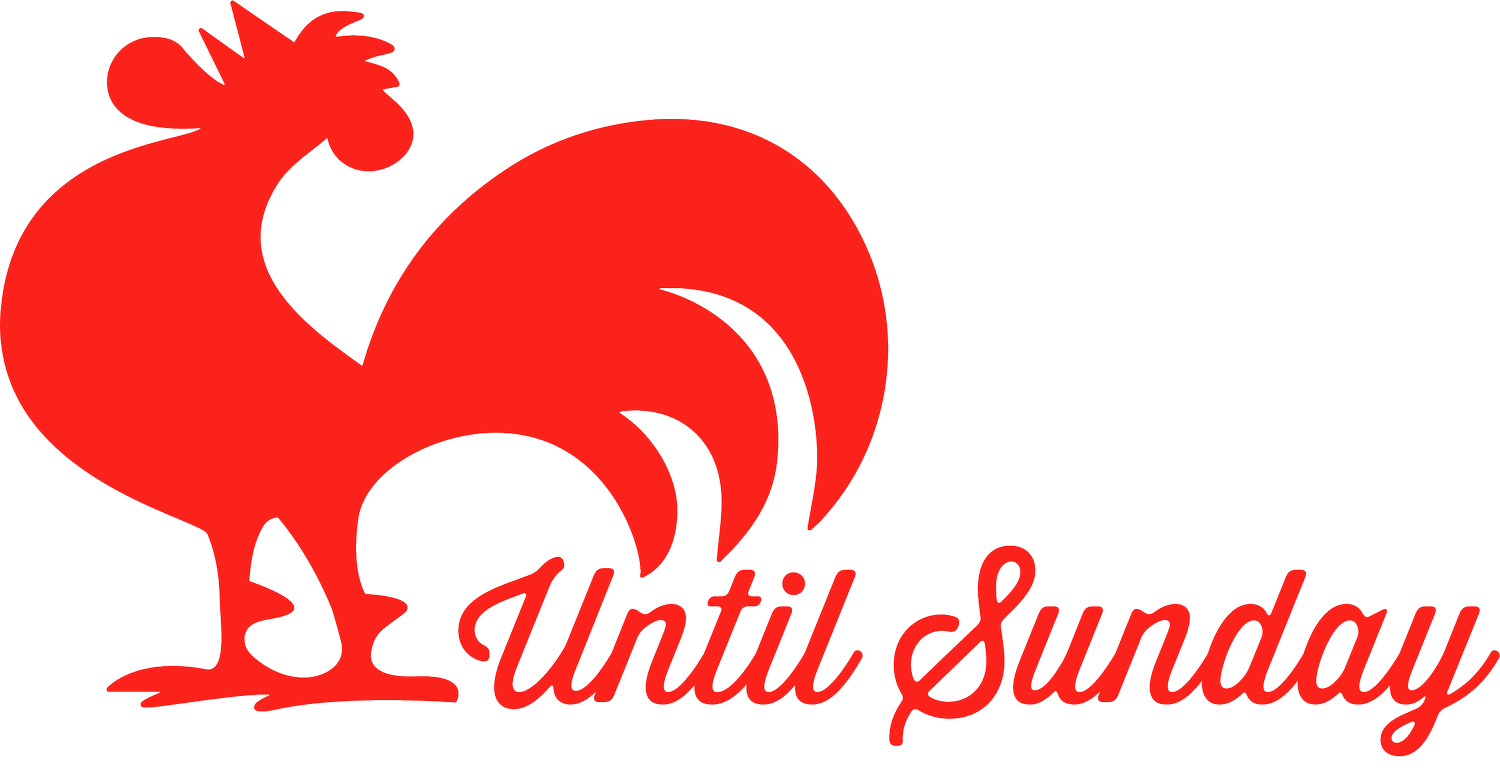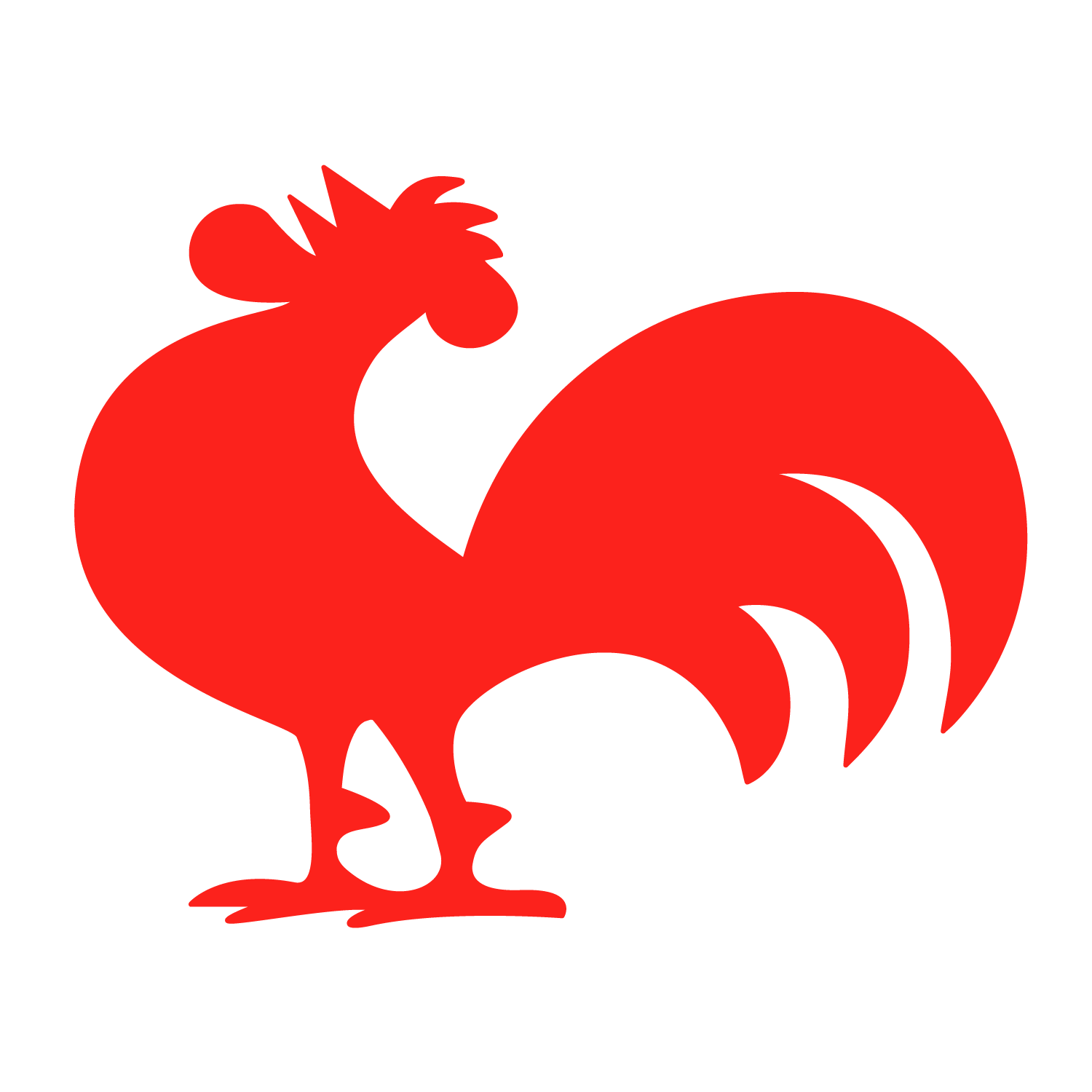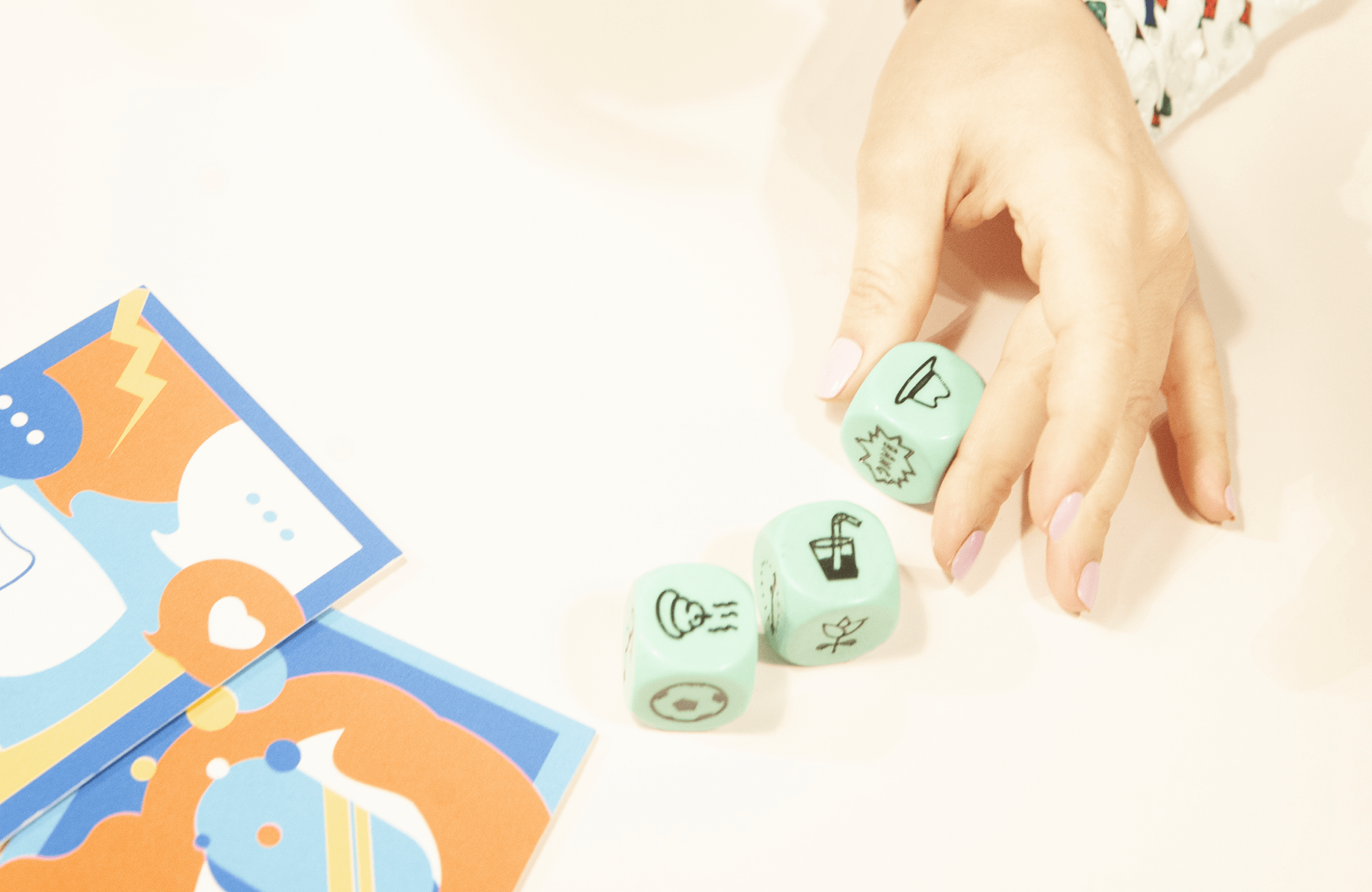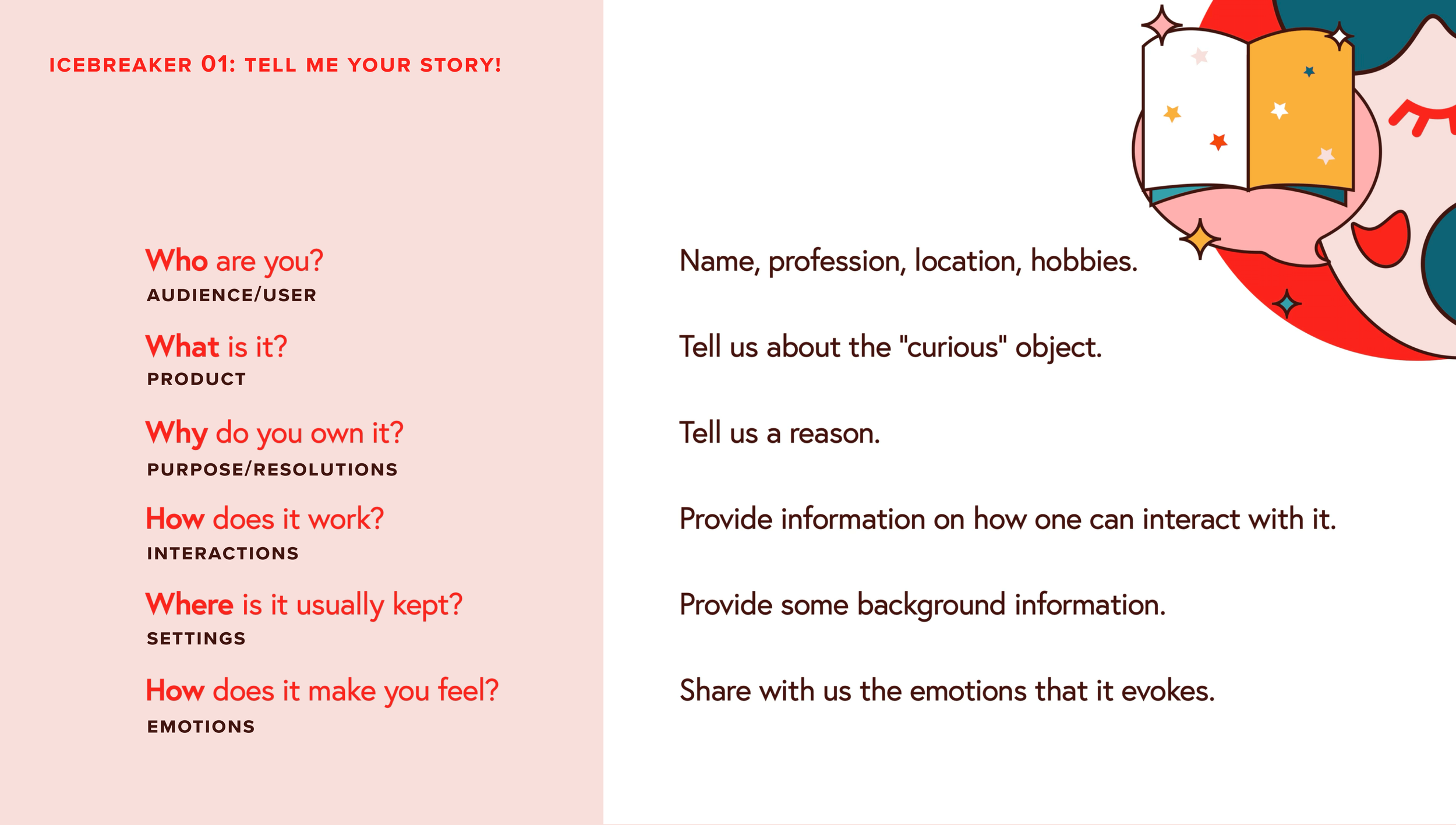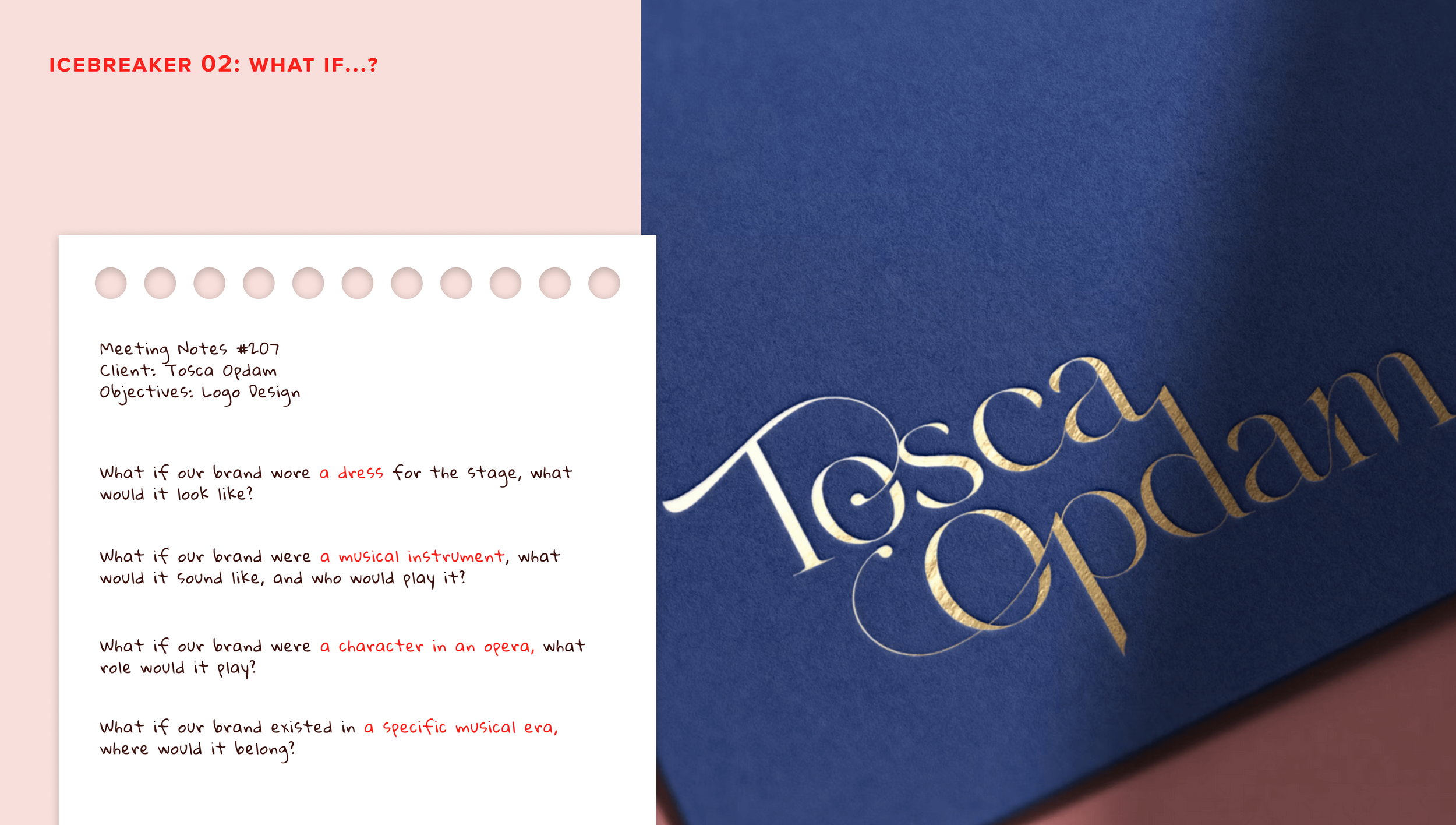#25. Three fun storytelling games to break the ice with anyone!
This newsletter belongs to “The Sunday Tales Summer Edition”.
These summer letters are a bit lighter, a bit slower, just like the season.
But they’re also an opportunity: a chance to treat these months as an open campus, to learn something new, reflect on my process, and find better ways to do the work I care about.
We always imagine team meetings, stakeholder interviews, and workshops to be conducted seriously and in a highly organised manner. Yet our initial encounters with the participants are often peppered with awkward moments of silence and self-conscious embarrassment.
Until someone is brave enough to start a conversation, these moments float over the top of the room, like stubborn clouds on a sunny day.
Storytelling tools. This is a fun – and cheap! – game I bought at Flying Tiger a few years ago. I have used it a few times with children’s workshops. Laughter is guaranteed!
It’s for this reason that I’m offering you some fantastic icebreakers that I’ve used in the past, on different occasions, to ensure my meetings kick off in a relaxed and productive way.
You may not be surprised to know that each icebreaker is based on storytelling… which is why they are both simple and approachable. As I always say, our brains are hard-wired for stories!
Icebreaker 01: Tell me your story!
To get participants in the mood for my workshops, I ask them to either bring a curious object with them, or show me a picture on their phone and explain the story behind it.
I will also ask them to (more or less) answer specific questions, or to ensure these questions are answered as they speak, before summarising their answers at the end.
Who are you? Simple questions that help know each other better.
The questions are all to do with specific storytelling fundamentals, and they can be used to guide even the most embarrassed participant!
Why it works:
The idea is to get to know each-other better, by sharing stories about ourselves. These stories have the power to make each member feel connected and part of the team. For you as the organiser, they can promote an understanding of each participant’s interests and attitude, which can be very useful as the workshop progresses.
This icebreaker also proves that we are all innate storytellers, which sets just the right tone to follow up with my storytelling workshops!
When to use this icebreaker:
You can use this particular icebreaker when starting a workshop (if it’s about storytelling or presentation design, so much the better!) or when working with a large team. I have also used it informally at gatherings with friends to learn more about undiscovered parts of their lives.
Icebreaker 02: What if?
I have been using this storytelling icebreaker for so long, and in so many different ways, that I’ve lost count! It’s a game children play a lot, or at least I used to play with my brother, to guess the secret object he was hiding behind his back or written on a tiny piece of paper.
Now, as a grown-up designer, I’ve found that it can be applied in many ways, especially when I’m trying to assess a client's vision or the values of a brand.
What if? for Tosca Opdam’s identity design. This can be a great icebreaker that may give rise to interesting discussions.
For example, in my brand design work I ask a lot of “what if..." questions to clients, that get to the root of how they envision their brand. Like so:
What if your brand was an animal?
What if your brand was a colour?
What if your brand was a type of dance?
I will usually repeat their answers back to them, also asking what they mean by that specific comparison and why they appreciate it. I use these valuable exchanges to guide the direction of my design process.
Why it works:
These simple questions can lead to a deeper understanding of the characters, values, and deeper insights about the client’s vision that they may not otherwise be able to express clearly.
When to use this icebreaker:
Use what if? during the initial briefing meetings with a new client, or during a product discovery phase. The questions will not only create fun moments of reflection and brainstorming, but they will also relax everyone in the room, especially if fond childhood memories are sparked!
Icebreaker 03: Scenario-sketching
This is a super fun exercise to do all together, even if you don’t think you’re any good at drawing! Scenario-sketching is a useful icebreaker for team members (designers and developers) and is also effective when used between designers and stakeholders.
To get started, you simply need some paper and a pencil. Divide the paper into small sections and then ask your participants how they envision their product will be used. Sketch the possible scenarios.
Mini Studio storyboarding. As we were imaging how the product could be used by parents and children alike.
For example, at Mini Studio, the startup company I’m currently working with – which helps children bring their dreams to life via cartoons – we envision that our product will be used by parents, for meaningful pre-bedtime moments with their children.
As the CEO was describing this very scenario, I sketched it into my notebook and saw more clearly how the product would be used. I drew a tablet, with the parent pressing different buttons as the child narrated his story.
Why it works:
Storyboards are an easy way to show the different ways in which a product could be used. They are fast, convenient, cheap, and importantly, highly engaging.
Some storyboards can resemble comics, offering a fun and immediate method of visualising user case studies. Plus, if your drawings happen to be beautiful, they could even be included in pitches and presentations to stakeholders, for a strong and original visual impact!
When to use this icebreaker:
This icebreaker is great when used just before designing wireframes to map experiences. It helps imagine the scenario and lifecycle of a product easily through a possible user case scenario. They work even better when they are based on real user research.
I hope you enjoyed this relaxed issue, with some valuable tips on how to break the ice among peers and stakeholders.
I enjoy learning new ways to engage with people and help them have a fun time working with me, while also having productive meetings.
Want to read the first chapters of my book – for free?
I’m currently writing a book about storytelling for designers. It’s been years in the making, and I’m finally ready to share it, one chapter at a time.
Join my newsletter The Sunday Tales to become one of the first readers. You’ll get exclusive access to the early drafts, plus the chance to help shape the book through your thoughts and feedback.
